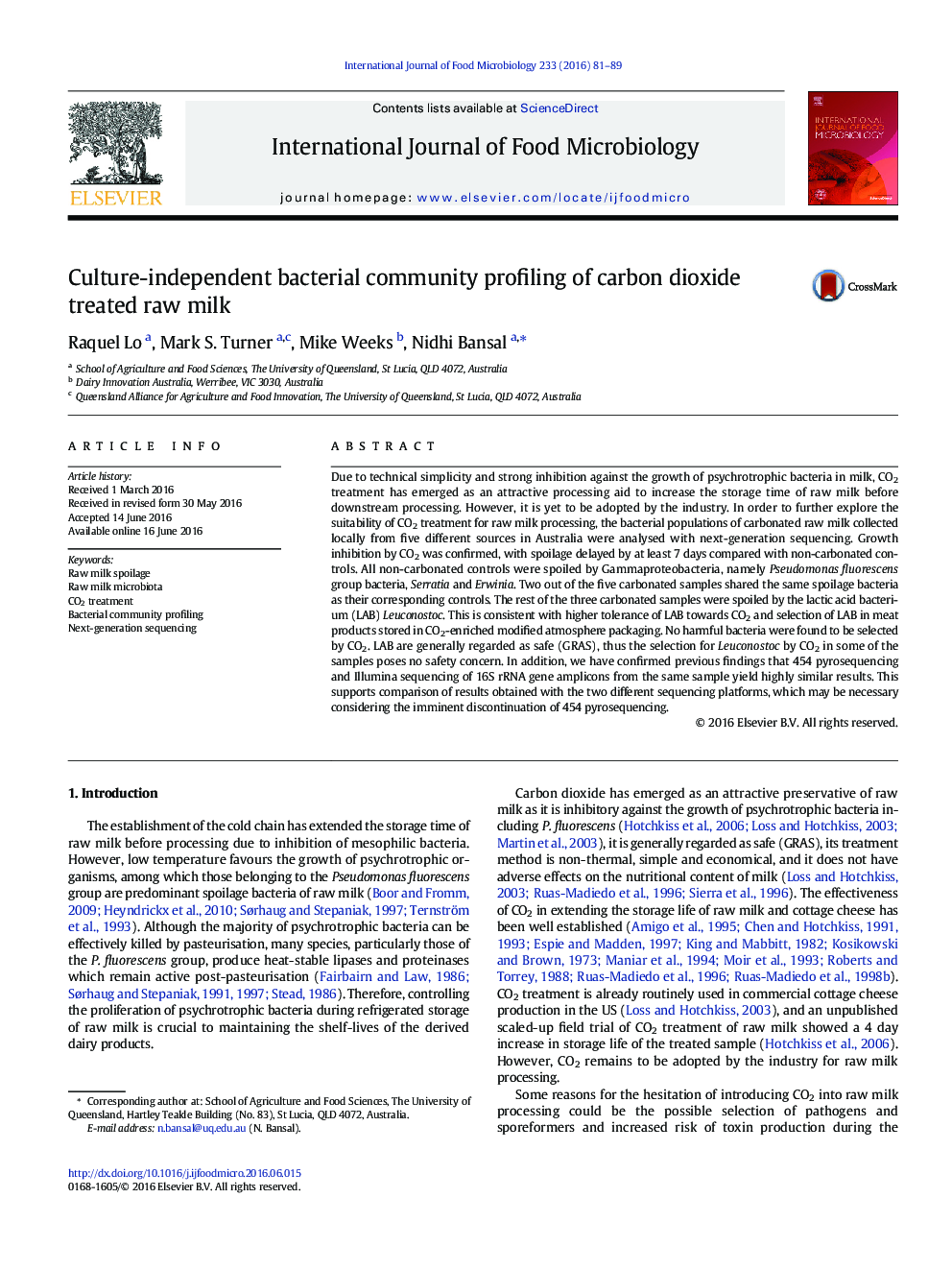| کد مقاله | کد نشریه | سال انتشار | مقاله انگلیسی | نسخه تمام متن |
|---|---|---|---|---|
| 4366184 | 1616550 | 2016 | 9 صفحه PDF | دانلود رایگان |
• Five carbonated raw milk samples were analysed by next-generation sequencing.
• Three samples were spoiled by Leuconostoc, unlike the non-carbonated controls.
• Two samples had the same spoilage bacteria as the controls (Pseudomonas, Serratia).
• No harmful bacteria were selected by CO2 treatment.
• CO2 increased storage life of raw milk stored at 4 °C for at least 7 days.
Due to technical simplicity and strong inhibition against the growth of psychrotrophic bacteria in milk, CO2 treatment has emerged as an attractive processing aid to increase the storage time of raw milk before downstream processing. However, it is yet to be adopted by the industry. In order to further explore the suitability of CO2 treatment for raw milk processing, the bacterial populations of carbonated raw milk collected locally from five different sources in Australia were analysed with next-generation sequencing. Growth inhibition by CO2 was confirmed, with spoilage delayed by at least 7 days compared with non-carbonated controls. All non-carbonated controls were spoiled by Gammaproteobacteria, namely Pseudomonas fluorescens group bacteria, Serratia and Erwinia. Two out of the five carbonated samples shared the same spoilage bacteria as their corresponding controls. The rest of the three carbonated samples were spoiled by the lactic acid bacterium (LAB) Leuconostoc. This is consistent with higher tolerance of LAB towards CO2 and selection of LAB in meat products stored in CO2-enriched modified atmosphere packaging. No harmful bacteria were found to be selected by CO2. LAB are generally regarded as safe (GRAS), thus the selection for Leuconostoc by CO2 in some of the samples poses no safety concern. In addition, we have confirmed previous findings that 454 pyrosequencing and Illumina sequencing of 16S rRNA gene amplicons from the same sample yield highly similar results. This supports comparison of results obtained with the two different sequencing platforms, which may be necessary considering the imminent discontinuation of 454 pyrosequencing.
Journal: International Journal of Food Microbiology - Volume 233, 16 September 2016, Pages 81–89
